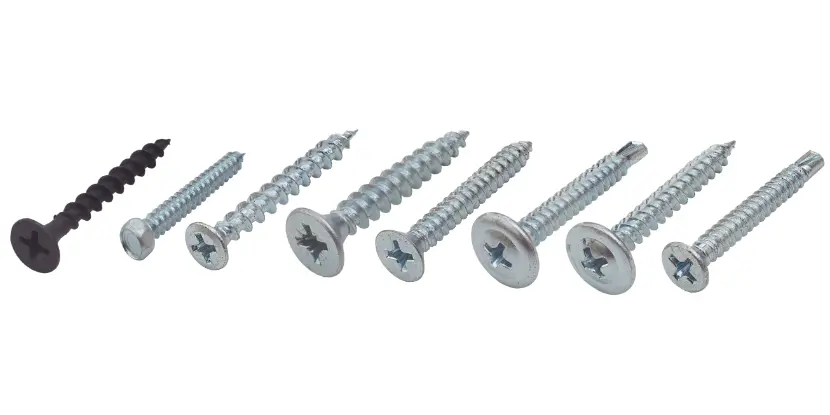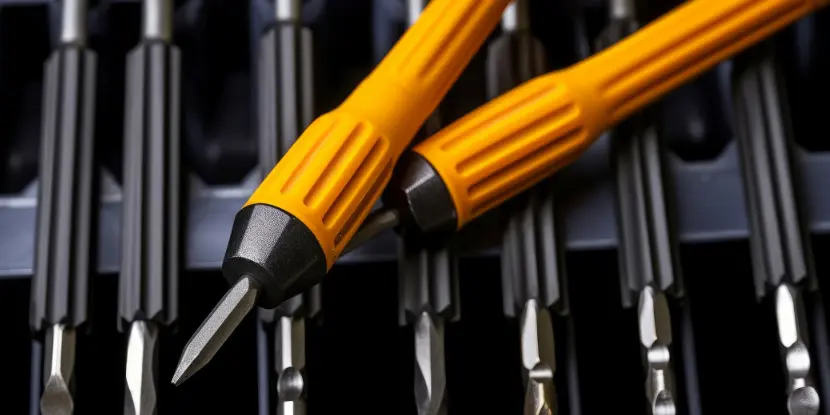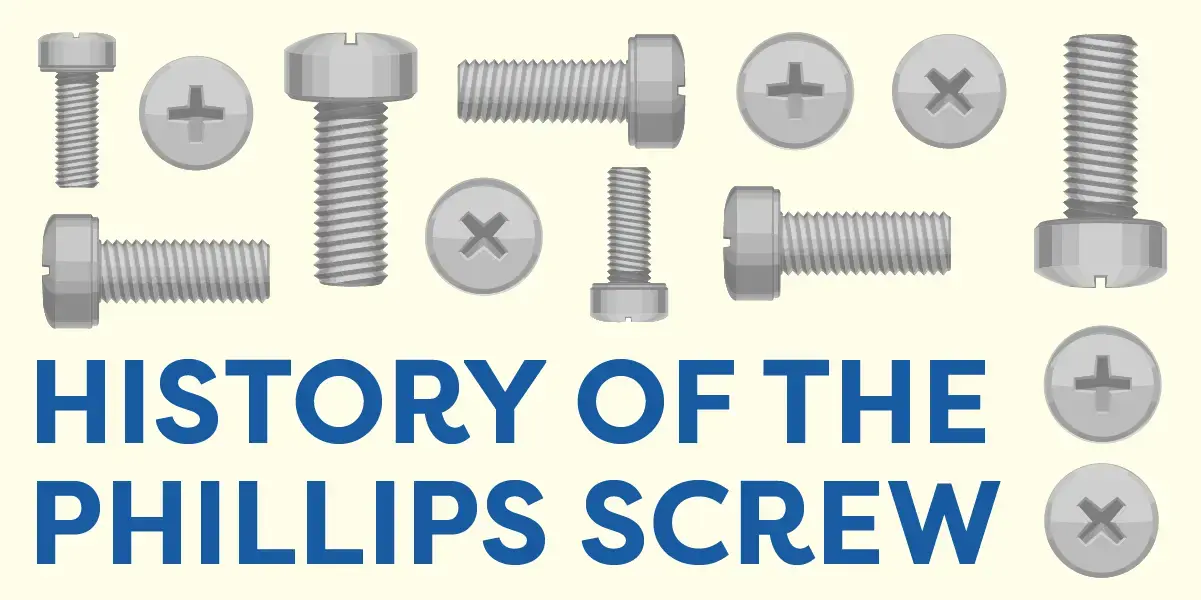It seems so obvious: a more efficient screw that handles higher torque, reduces slippage, and speeds the manufacturing process.
Yet the Phillips screw wasn’t invented until the early 1930s and patented by John P. Thompson of Portland, Oregon, in 1932.
The commercial telephone had already been in service for over half a century! What do you want to bet a number of calls dealt with “cam out?”
Screwdrivers would often slip out of standard screws under torque. The Phillips screw addressed this problem and revolutionized the assembly line.
These unassuming cruciform screws now outsell standard screws due to their widespread adoption in furniture assembly, electronics, and automotive manufacturing (among other things).
Inception: The Birth of an Ingenious Idea
During the automotive boom of the 1930s, a young engineer named John P. Thompson grappled with a persistent problem: the inefficiency and frustration caused by the frequent slipping of traditional screwdrivers.
Thompson embarked on a quest to design a screw head with superior grip.

Self-driving Phillips head screws.
Eureka Moment: The Concept of the Phillips Head
In a moment of inspiration, Thompson conceived a new screw head characterized by a cruciform shape with angled flanks. This innovative configuration would distribute force evenly, reducing slippage and allowing greater torque.
With his prototype in hand, Thompson approached the renowned industrialist Henry F. Phillips.
Evolution: From Prototype to Production
Phillips wasted no time in securing the patents for the new screw head and the corresponding screwdriver. Thus, in 1936, the Phillips Screw Company was born, heralding a new era in fastening technology.
Industrial Adoption: Revolutionizing Assembly Lines
The Phillips screw had an immediate impact on industries like automotive manufacturing and aerospace. It dramatically improved productivity, earning widespread adoption among manufacturers worldwide.

Closeup of a Phillips head screwdriver and screw.
Refinement & Standardization: Fine-Tuning the Phillips System
As demand for Phillips screws and screwdrivers soared, the need for standardization arose. In collaboration with major manufacturers, the Phillips Screw Company refined and standardized the dimensions of the screw heads and drivers, ensuring compatibility across various applications — a testament to the company’s commitment to quality and innovation.
Global Proliferation & Domination
With its superior performance and standardized design, the Phillips screw swiftly gained popularity in industrial settings and among consumers and DIY enthusiasts. Its ease of use and reliability made it a staple in households and workshops around the globe, cementing its status as an indispensable fastener for myriad tasks.
Endurance & Adaptability: Standing the Test of Time
Today, the Phillips screw endures as a timeless classic. Its straightforward yet effective design remains mostly unchanged, proving that the simplest solutions are sometimes the most enduring.

A Phillips screwdriver set
Ubiquity: The Phillips Screw’s Global Reach
It’s hard to imagine the modern world without Phillips screws. Used in everything from furniture and appliances to cars and airplanes, they’re an everyday part of our lives.
So next time you reach for your trusty Phillips screwdriver, remember the screw that made it possible, and the remarkable journey from concept to ubiquity. Who knows, perhaps the next big idea in fasteners is just a screw-turn away.

A Phillips screw that has stood the test of time.
Frequently Asked Questions (FAQs)
Q: What makes the Phillips screwdriver different from other screwdrivers?
The Phillips screwdriver features a cruciform-shaped tip with angled flanks, allowing greater torque application and minimizing slippage during use.
Q: Why is it called the Phillips screwdriver?
The screwdriver is named after Henry F. Phillips, the industrialist who recognized the potential of John P. Thompson’s invention and secured the patents for the screw head and driver.
Q: What industries commonly use Phillips screws and screwdrivers?
They’re used in automotive, aerospace, electronics, and construction industries, due to their efficiency and reliability. Even your car’s license plate may be attached by Phillips screws.
Q: Can Phillips screws be used with any material?
Phillips screws can be used with various materials, including wood, metal, and plastic. However, the specific type of Phillips screw (material and thread design) should be chosen based on the material to ensure optimal performance.
Q: Is it possible to replace a flathead screw with a Phillips screw?
In many cases, you can replace a flathead screw with a Phillips screw of the same size and thread pattern. This might be desirable for easier driving and greater torque application.
Q: What’s “cam-out,” and why does it happen less often with Phillips screws?
Cam-out occurs when the screwdriver tip slips out from the screw head during turning. The Phillips screw, with its self-centering, cruciform shape, significantly reduces cam-out compared to flathead screws under similar torque.
Q: What’s the difference between Phillips and Pozidriv screw heads?
While both have a cross-shaped impression, Pozidriv screw heads have additional lines between the cross, allowing more torque to be applied without cam-out. Pozidriv screwdrivers and screws aren’t interchangeable with Phillips.
Q: How do I remove a stripped Phillips screw?
Removing a stripped Phillips screw can be challenging. Techniques include using a larger screwdriver, applying a rubber band between the screwdriver and the screw head, or using specialized tools like a screw extractor.
Q: Have there been any improvements to the original Phillips screw design?
The Phillips screw design has seen various enhancements, including versions with anti-tampering features, improved materials for greater strength, and modifications for better torque transmission.

